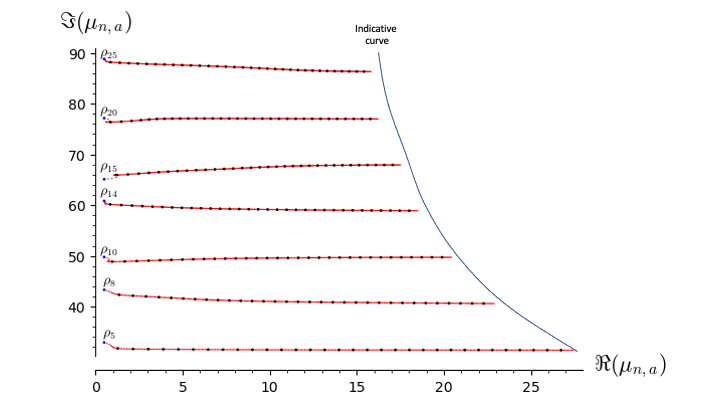The well-known integral expression for the entire function:
$$(s-1)\,\zeta(s) = \frac{-i\,\pi}{2}\int_{1/2-i\infty}^{1/2+i\infty} \frac{\csc(\pi\,u)^2}{u^{s-1}} \, du \qquad s \in \mathbb{C} \tag{0}$$
with $\zeta(s)$ the Riemann zeta-function, can be quite elegantly transformed into a Riemann-Liouville differintegral, that yields all fractional integrals for $\Re(\alpha) > 0$ and all fractional derivatives for $\Re(\alpha) < 0$:
\begin{align} & {}_0D^{-\alpha}_s \bigl((s-1)\,\zeta(s)\bigr) \\[8pt] = {} & \frac{-i\,\pi\,s^\alpha}{2\,\Gamma(\alpha+1)} \int_{1/2-i\infty}^{1/2+i\infty} u\csc(\pi\,u)^2 M \big(1,\alpha+1,-s \log(u)\big)\,du \tag{1} \qquad \alpha, s \in \mathbb{C}. \end{align}
with $\alpha \ne -1,-2, -3,\ldots$ and $s \ne 0$ when $\Re(\alpha) < 0$. $M(p, q, z)$ is the KummerM-function.
To complement this, we have for the integer derivatives $\alpha = -1,-2, -3,\ldots$ the simpler integral expression: \begin{align} & \frac{\mathrm{d}^{|\alpha|}}{\mathrm{d}s^{|\alpha|}}\bigl((s-1)\,\zeta(s)\bigr) \\[8pt] = {} & (-1)^{\alpha+1}\,\frac{ i\,\pi}{2}\int_{1/2-i\infty}^{1/2+i\infty} \frac{\csc(\pi\,u)^2}{\log^\alpha(u)\,u^{s-1}}\,du \qquad s \in \mathbb{C} \tag{2} \end{align}
Equations (1) and (2) can be evaluated numerically and enable computation of the roots $\mu_{n,\alpha}$. Starting from a non-trivial zero $\rho_n$ of $(s-1)\,\zeta(s)$, we can trace how the $\mu$'s "move" when $a$ is varied by a small amount. For instance, when we take $\alpha = -15,\ldots,15$ in steps of $0.1$ for the first $10\, \rho$'s, we obtain the following complex plot of the $\mu_{n,\alpha}$-roots:
The blue dots are the $\rho$'s at $\alpha=0$. The green dots are the $\mu$'s where $\alpha > 0$ (fractional integrals) and the red dots are the $\mu$'s where $\alpha < 0$ (fractional derivatives). The black dots just highlight integer values of $\alpha$. The green trajectories of the $\mu$'s of the fractional integrals look pretty clean and appear to converge towards some vertical arithmetic progression.
The red trajectories of zeros of the fractional derivatives seem more complicated at first sight and clearly travel at different speeds. However, extended computations with larger $\alpha$, show that clear patterns emerge. For instance there are some trajectories starting at certain $\rho$'s that all abruptly end just before the second derivative (whereas all others seem to travel to the right forever). The plot below indicates that their "end stations" seem to reside on a curve:
Computing $\alpha =0,\ldots, -32.9$ in steps of $-0.1$, reveals further patterns for the other $\rho$-trajectories. For instance when isolating these specific trajectories, we get:
etc.
Q1: It wouldn't be possible to predict from a $\rho_n$, which type of trajectory (in a certain pattern) will be followed. However, could the patterns emerging at increasingly negative or positive $\alpha$ be explained? Could it be the KummerM function in (1) that starts to dominate the integrand when $a$ gets larger? And what is so special about the second derivative ($\alpha=-2$) that it completely ends certain trajectories of zeros, whereas all other trajectories seem to continue to the right forever?
Q2: Speiser showed that the Riemann Hypothesis is equivalent to the fact that the non-trivial zeros of $\zeta'(s)$ are on the right of the critical line. Zooming in on the trajectories of zeros of (1) in the strip, at least the first 30 zeros obey a stronger conjecture: i.e. the RH is equivalent to all red $\mu$'s of $\alpha < 0$ residing on the right of the critical line (and all green $\mu$'s residing on left). Acknowledging that we are dealing with a slightly different function $(s-1)\,\zeta(s)$ than Speiser's, could this conjecture be within reach of a proof?
P.S.:
Equation (1) obviously also has real zeros with trajectories commencing at the trivial zeros $-2, -4, -6,\ldots$. An initial observation about those is that all trajectories (both $\alpha < 0$ and $\alpha > 0$) always end at the half-derivative/integral and other $\mu$'s only exist when $\alpha=$ integer.



